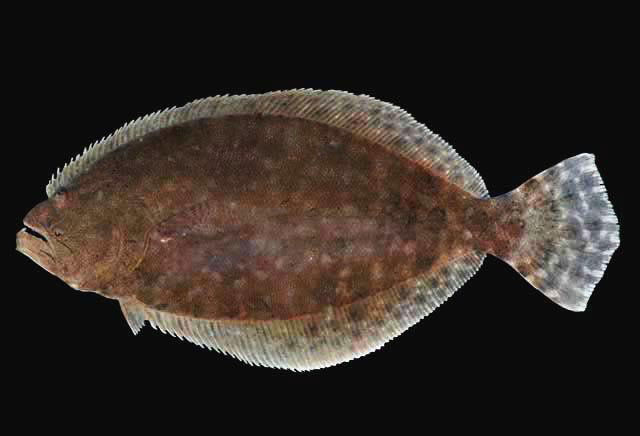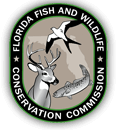Southern Flounder
| Life History Parameters | Value |
|---|---|
| Maximum weight (kg) | 9.3 |
| Maximum age (year) | 8 |
| Age at length 0 (year) | -1.317 |
| Age at Maturity (months) | 24 |
| Maximum Length (cm) | 92 |
| Length at Maturity (cm) | 40 |
| Linf. Asymptotic Length (cm) | 65.2 |
| K - von Bertalanffy growth coefficient | 0.28 |
| Natural Mortality | 0.36 |
| Jan | - | - | - | - | - | - | - | - | Oct | Nov | Dec |
Habitat and Distribution
This species occurs in the western Atlantic from North Carolina to the western Gulf of Mexico, where it can be found on sand, mud and silty bottom habitats in marine, brackish, and sometimes riverine habitats.
Spawning season in the Gulf of Mexico
In the GOM, this species is reported to spawn from October through January, with peak spawning during November and December. However, adults that are captured in the estuaries and channel passes during the outbound migrations that occur in October through December are spawning capable but not actively spawning. Therefore, it is is possible that peak spawning actually occurs much later during January and February when fish are thought to be concentrated at the offshore spawning grounds.
Spawning Patterns
Adult Southern Flounder migrate to the lower portions of estuaries in the fall months as water temperatures begin to decrease (often in association with cold fronts), where they form large pre-spawning aggregations. From mid-October to mid-November, they engage in a mass migration offshore to spawn in large transient aggregations of thousands to tens of thousands of individuals at depths of 15 to greater than 70 m. Individual fish may migrate several hundreds of kilometers to reach spawning sites. Individual females can spawn every 3 to 7 days, with larger females capable of spawning more frequently. Southern Flounder are broadcast spawners with external fertilization. After the spawning season, females migrate back to inshore and estuarine areas, whereas males tend to remain offshore or along the coast.
Fishing Patterns in Relation to Spawning
Commercial landings are greatest during the period of October through December, which coincides with peak spawning migration of adults from inshore waters to offshore spawning grounds. Average monthly landings are much greater during spawning months than non-spawning months. Recreational landings are elevated during the period of May to October and then decrease during the spawning season.
Management of Spawning Aggregations
The fisheries are managed by state regulations. Commercial fisheries are subject to daily or annual catch limits. Recreational fisheries are managed by daily catch limits. Recreational gigging is permitted in all gulf states. There are no seasonal closures, although Texas restricts gear use and catch limits Nov. 1 - Dec. 14. Minimum size is 14" in Texas, 12" in Mississippi, and 12" in Alabama and Florida.




